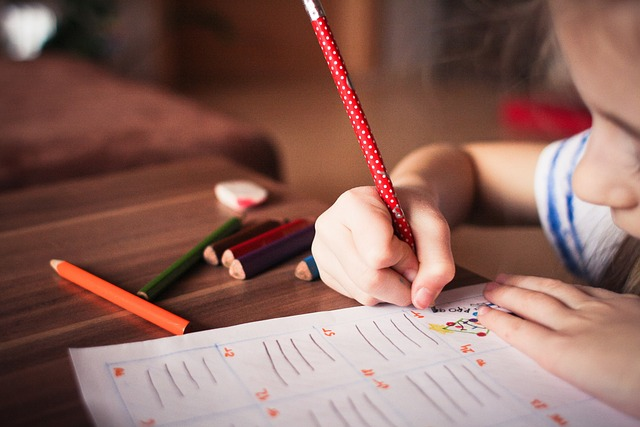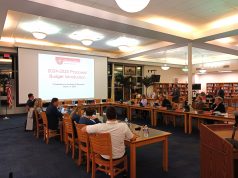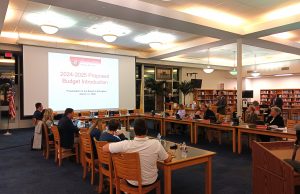Marianne Fidishin Ph.D. is the Executive Director of Ann Arbor Public Schools and a contributor to several publications on education matters. In the following article, Marianne Fidishin discusses what goes into securing equal education access for students with special needs.
Ensuring equal access to education for all students, including special needs students, is a fundamental right and a crucial factor in overall development. This guide will help you navigate the complex world of special needs schooling, from understanding legislation to creating inclusive learning environments and advocating for your child’s rights. Together, Marianne Fidishin notes that we can build a more inclusive and supportive educational system that empowers every student to reach their full potential.
Marianne Fidishin Ph.D. Discusses Key Legislation
Marianne Fidishin observes that grasping legislation that impacts special needs education is fundamental to ensuring equal access for children with disabilities. Inclusive education and related services are fundamental and supported by various organizations, including the United Nations Children’s Fund (UNICEF), which aims to improve access to education for children with disabilities.
The Convention on the Rights of Persons with Disabilities (CRPD) mandates accessible schools, reasonable classroom accommodations, and addressing each student’s academic, social, and life skills needs, including those with physical or mental impairment.
Individuals with Disabilities Education Act
Marianne Fidishin explains that the Individuals with Disabilities Education Act (IDEA) is a federal law that ensures free public education for children with disabilities, supported by federal financial assistance. IDEA outlines the special education benefits and services that children with disabilities are entitled to, such as an Individualized Education Program (IEP), which is a written plan developed to ensure that a child with special needs receives the necessary educational support and services.
The Rehabilitation Act covers children with disabilities between the ages of 3 and 21 under its Part B, providing a wide range of support to ensure equal access to education.
Creating Inclusive Learning Environments
Establishing inclusive learning environments is vital to enable students with disabilities to learn with their peers in general education classrooms, adhering to the principle of the least restrictive environment. Research has shown that inclusive classrooms foster an appreciation for diversity and acceptance amongst all students, leading to better academic results for both students with and without disabilities.
Adopting the Universal Design for Learning and providing suitable classroom accommodations and modifications are practical strategies for creating an inclusive learning environment.
Universal Design for Learning
Universal Design for Learning (UDL) is an educational framework that facilitates access and offers versatility within the learning environment. Marianne Fidishin says the aim of UDL is to accommodate the distinct learning requirements of students with disabilities and improve the educational experience of all students in the classroom.
Educators have reported that UDL is an effective instructional approach, allowing them to engage a variety of student demographics more effectively.
Classroom Accommodations and Modifications
Classroom accommodations and modifications are strategies employed to facilitate the access of the general education curriculum and participation in school activities for students with disabilities. Accommodations are alterations made to the learning environment, curriculum, or instruction to support the needs of students with disabilities, while modifications involve changes to what is being taught or expected from the student.
Marianne Fidishin explains that tailoring these accommodations and modifications to the individual needs of the student, based on their IEP, is crucial in ensuring that their unique learning needs are met.
Collaborating with School Professionals and Support Services
 Working jointly with school professionals and support services is crucial in delivering customized instruction and assistance to students with disabilities. By working together, parents, teachers, and other school professionals can develop and implement an Individualized Education Program (IEP) that addresses the specific needs of each student.
Working jointly with school professionals and support services is crucial in delivering customized instruction and assistance to students with disabilities. By working together, parents, teachers, and other school professionals can develop and implement an Individualized Education Program (IEP) that addresses the specific needs of each student.
Cooperation can result in enhanced learning outcomes for students with disabilities, as it ensures that each student receives the support and related services necessary for their academic success.
Role of Special Education Teachers
- Special education teachers play a crucial role in providing individualized instruction and support for students with disabilities. They are responsible for developing and implementing IEPs, tracking student progress, and working in conjunction with other school personnel to ensure that each student’s unique learning needs are met.
- With their expertise, special education teachers can serve as mentors and provide support to general education teachers, helping them to implement inclusive practices in the classroom.
Early Intervention Services
Marianne Fidishin explains that early intervention services help identify and address developmental delays and disabilities in young children. By providing support to students and their families before the student enters school, early intervention services can play a crucial role in:
- Setting the foundation for future academic success
- Improving social and emotional development
- Enhancing communication and language skills
- Addressing physical and motor delays
- Promoting cognitive development
Requesting an evaluation is the initial step for assessing a child’s eligibility for special education services, which can then lead to the development and implementation of an IEP tailored to the child’s specific needs.
Navigating the Individualized Education Program (IEP) Process
Marianne Fidishin notes that for parents and caregivers, the Individualized Education Program (IEP) process can be intricate and daunting. However, understanding the process and being an active participant can greatly benefit your child’s education and ensure they receive the appropriate services and accommodations.
The IEP process involves requesting an evaluation, developing the IEP in collaboration with school professionals, and implementing it to address the specific needs of the student.
Requesting an Evaluation
Requesting an evaluation is the first step in determining if a child is eligible for special education services. The procedure typically involves:
- Composing a letter or email to the school principal or special education coordinator
- Including the child’s full name
- Providing the rationale for the evaluation
- Expressing any particular concerns
By initiating an evaluation, parents can help ensure that their child’s unique needs are identified, and that they receive the necessary support and services to succeed in their education.
Developing and Implementing the IEP
Developing and implementing the IEP is a collaborative process that involves parents, teachers, and other school professionals working together to create a customized plan for the student’s education. The IEP outlines the specific instruction, supports, and services that the student requires to meet their unique learning needs, according to Marianne Fidishin.
Monitoring the student’s progress and providing appropriate accommodations and modifications are essential to ensuring the successful implementation of the IEP and the student’s academic success.
Advocating for Your Child’s Educational Rights
Parents and caregivers of students with disabilities have a critical role in advocating for their child’s educational rights. Marianne Fidishin says that by understanding your child’s rights under federal and state laws and being proactive in addressing concerns and disputes, you can ensure that your child receives the appropriate services and accommodations to succeed in their education. This is especially important for disabilities and their families, as they face unique challenges in the educational system.
Building a strong partnership with your child’s school and being actively involved in the special education process, including secondary education, can greatly benefit your child’s overall well-being and academic success.
Resolving Disputes and Concerns
Marianne Fidishin says that resolving disputes and concerns related to your child’s education may involve working with school staff, seeking legal advice, or filing a complaint with the appropriate agency. Effective communication and collaboration with your child’s school can often help address concerns and find solutions that work for both parties.
If necessary, consulting with an attorney or filing a complaint with the relevant agency can help ensure that your child’s rights are protected and that they receive the appropriate services, accommodations, and technical assistance to succeed in their education.
Supporting Students with Disabilities in Extracurricular Activities
 Beyond academic success, Marianne Fidishin says it’s vital to support students with disabilities in extracurricular activities for their overall well-being and social development. Participating in accessible sports and clubs, as well as promoting social inclusion, can help students with disabilities build friendships, develop social skills, and foster a sense of belonging in their school community.
Beyond academic success, Marianne Fidishin says it’s vital to support students with disabilities in extracurricular activities for their overall well-being and social development. Participating in accessible sports and clubs, as well as promoting social inclusion, can help students with disabilities build friendships, develop social skills, and foster a sense of belonging in their school community.
Schools should take proactive steps to ensure that all extracurricular activities are accessible to students with disabilities and that they have the same opportunities to participate as their peers without disabilities.
Accessible Sports and Clubs
Accessible sports and clubs provide opportunities for students with disabilities to participate in extracurricular activities alongside their peers. These programs, such as Challenger Athletics, U.S. Paralympics, and Disabled Sports USA, aim to create inclusive opportunities for students with disabilities to engage in sports and recreational activities.
Marianne Fidishin observes that by providing reasonable accommodations and modifications, schools can ensure that all students with disabilities have the same opportunities to participate in extracurricular activities as their peers without disabilities, fostering an inclusive and supportive school community.
Encouraging Social Inclusion
Promoting social inclusion plays a key role in assisting students with disabilities to build friendships, develop social skills, and establish a sense of belonging in their school community. Schools can promote social inclusion by:
- Creating an inclusive learning environment
- Encouraging all students to participate in extracurricular activities
- Encouraging students to interact with their peers regardless of their abilities
By fostering an inclusive environment, schools can:
- Cultivate a sense of belonging and community among all students
- Enhance academic performance
- Promote social-emotional development for students with disabilities
Summary
Marianne Fidishin explains that ensuring education access for special needs students is a complex but vital endeavor that involves understanding key legislation, creating inclusive learning environments, collaborating with school professionals, navigating the IEP process, advocating for your child’s rights, and supporting their participation in extracurricular activities. By working together, parents, educators, and school communities can create a more inclusive and supportive educational system that empowers every student, regardless of their abilities, to reach their full potential.






